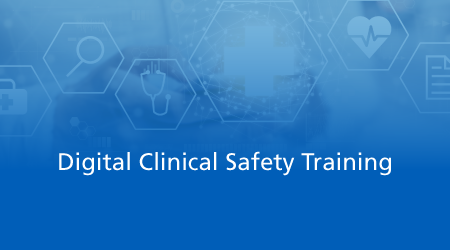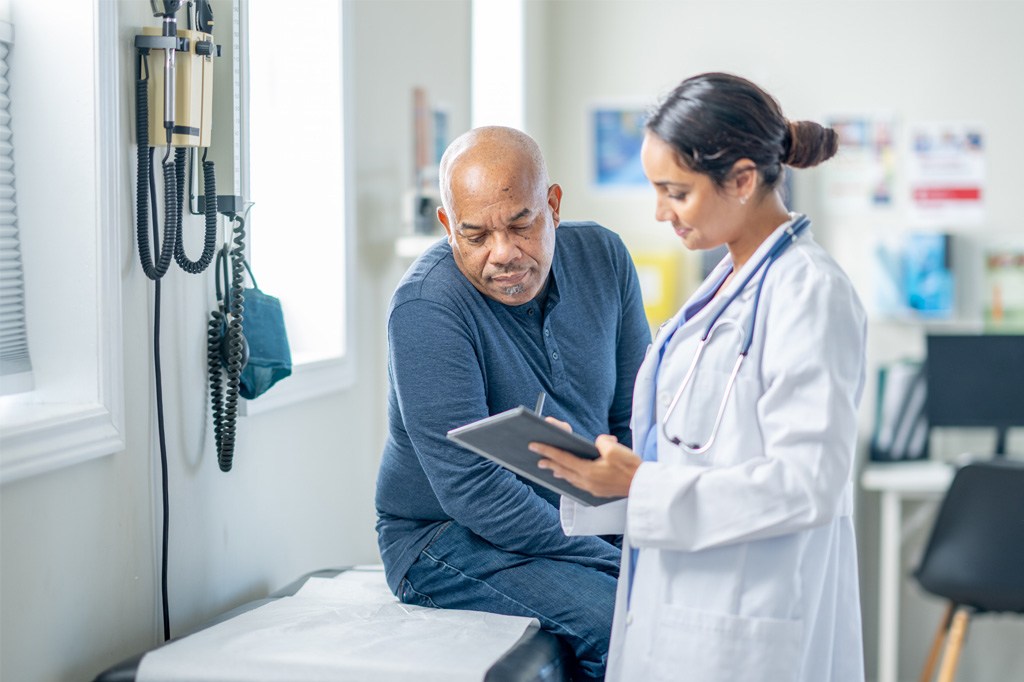Clinical Safety Officer: Ensuring Compliance with Healthcare Regulations and Standards
Clinical Safety Officer: Ensuring Compliance with Healthcare Regulations and Standards
Blog Article
Leading Responsibilities of a Medical Safety Police Officer in Modern Healthcare
In the evolving landscape of contemporary healthcare, the duty of a Medical Security Police officer has become significantly vital. These professionals are entrusted with systematically recognizing and handling professional risks, yet their duties prolong much beyond simple oversight. From developing thorough safety and security procedures to promoting a society of safety and security within healthcare groups, their impact is extensive. As they navigate the intricacies of regulatory conformity and personnel training, one must consider just how these initiatives straight impact individual care outcomes. What are the underlying challenges they deal with in this complex function, and how can they be successfully addressed?
Danger Assessment and Administration

The CSO teams up with multidisciplinary teams to collect data on incidents and near misses, assisting in a culture of openness and constant enhancement. By examining patterns and trends, the CSO can determine locations needing treatment, ultimately lowering the probability of negative events. Furthermore, the CSO makes sure compliance with regulative requirements and guidelines, which serve to improve individual safety and security and decrease liability dangers.
Efficient interaction is vital; the CSO needs to convey danger findings to stakeholders, consisting of medical care managers, individuals, and suppliers. In addition, the CSO should stay abreast of emerging threats related to new innovations and therapy methods, adjusting risk management methods as necessary. Eventually, by cultivating an environment of aggressive threat management, the Professional Security Officer contributes substantially to the general safety and security and quality of treatment provided within health care settings.
Developing Safety Protocols

In collaboration with multidisciplinary teams, the Scientific Security Police officer assesses information from event reports and run the risk of evaluations to educate protocol advancement. This consists of developing clear, workable treatments for different circumstances, such as infection control, medication administration, and emergency situation response. Ensuring that protocols are not just effective however additionally sensible is crucial; they should be conveniently recognized and incorporated into daily procedures.
Moreover, the Scientific Safety Officer remains upgraded on the most current developments in security actions and medical care modern technologies, adjusting methods as necessary. Routine evaluations and updates of these procedures are required to ensure they continue to be pertinent and efficient in dealing with emerging threats. Inevitably, well-developed safety and security procedures function as a structure for a culture of safety and security, promoting an atmosphere where client care is prioritized and risks are methodically alleviated.
Performing Training Procedure
While safety and security procedures supply the structure for threat monitoring, conducting reliable training sessions is important to ensure that all healthcare staff excel in these protocols. A Scientific Security Officer plays a critical function in establishing and performing thorough training programs tailored to the details demands of numerous teams within the medical care setting. This consists of organizing workshops, seminars, and hands-on training that deal with existing safety and security criteria, emergency situation treatments, and making use of security equipment.
In Addition, the Clinical Safety and security Officer must assess the knowledge spaces amongst personnel, ensuring that training sessions are interesting and appropriate. Using a mix of training techniques, such as interactive simulations and case studies, can boost understanding and retention. Clinical safety officer. Regularly set up training refreshers additionally bolster team readiness and versatility to progressing safety protocols
In addition, promoting a society of security within the company is essential. The Professional Safety Police officer must motivate open dialogue and responses during training sessions, permitting team to voice problems and share experiences. Inevitably, well-conducted training sessions empower health care professionals to react effectively to prospective dangers, promoting a much safer atmosphere for both patients and team.
Tracking Compliance Standards
Keeping track of compliance criteria is indispensable to the role of a Professional Safety and security Officer, making certain that all security procedures are constantly complied with across the medical care facility. This duty includes regular evaluations of professional techniques, policies, and procedures to align them with well established regulative and business standards.
The Medical Security Officer should conduct organized audits and reviews to identify possible gaps in compliance, cultivating a positive strategy to patient safety and security. By executing robust surveillance systems, the policeman can effectively track adherence to security methods and quickly attend to any type of variances.
Furthermore, the Professional Safety and security Officer collaborates with different divisions to make certain that all personnel participants are aware of and understand compliance requirements. This includes assessing incident reports, examining danger management techniques, and supplying comments to improve techniques.
Moreover, the officer should remain upgraded on evolving health care policies and requirements, guaranteeing that the facility adjusts appropriately. By growing a culture of accountability, the Clinical Security Policeman plays a crucial function in boosting the total safety and security and quality of care delivered to clients, eventually adding to far better wellness end results and business honesty.

Advertising a Culture of Security
Developing a culture of safety and security within a medical care click for more info facility is vital for improving and reducing threats client treatment. A Clinical Security Officer (CSO) plays a pivotal function in fostering this setting by promoting accountability, transparency, and constant improvement amongst team whatsoever levels. The CSO applies and creates safety and security methods that encourage open interaction and reporting of cases without concern of .
To effectively promote a society of safety and security, the CSO must participate in routine training sessions that highlight the significance of patient safety and security and danger management. These sessions ought to include real-life situation studies and simulations to assist personnel acknowledge prospective dangers and comprehend their obligations in reducing them. Furthermore, the CSO ought to facilitate interdisciplinary collaboration, ensuring that all divisions interact to deal with click for info security issues adequately.
Normal evaluations and comments mechanisms are vital parts of this society. The CSO should analyze safety and security information, determine trends, and share searchings for with the entire company to drive enhancement initiatives. By focusing on security, the CSO cultivates a setting where personnel feel encouraged to advocate for their people, bring about improved treatment high quality and ultimately, better wellness results.
Conclusion
Finally, the function of a Clinical Security Officer is indispensable to fostering a secure health care setting. By systematically recognizing medical threats, establishing comprehensive security protocols, and carrying out specialized training, these specialists improve team preparedness and compliance with governing standards. Promoting a culture of safety with open interaction and interdisciplinary collaboration considerably adds to boosted patient treatment. Eventually, the initiatives of Medical Security Police officers ensure that safety stays an extremely important emphasis within healthcare settings.
Ultimately, by promoting a setting of aggressive threat monitoring, the Scientific Security Policeman adds substantially to the general security and quality of care supplied within medical care Web Site setups.
Moreover, the Scientific Safety and security Police officer stays updated on the newest advancements in safety actions and medical care innovations, adapting protocols as necessary. Eventually, well-developed safety methods serve as a foundation for a culture of safety and security, promoting an environment where person treatment is prioritized and threats are methodically reduced.
To effectively advertise a culture of safety and security, the CSO should engage in routine training sessions that emphasize the value of individual security and danger management (Clinical safety officer). Ultimately, the efforts of Professional Safety and security Policemans guarantee that safety remains an extremely important focus within healthcare settings
Report this page